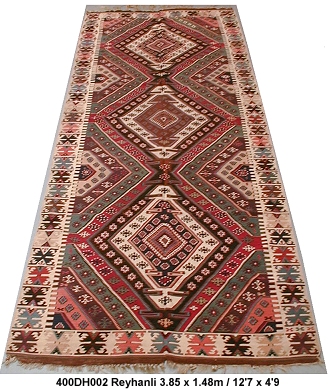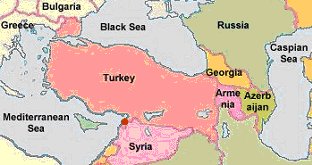
|
Origin: Reyhanli Mediterranean Anatolia Woven: c. 1870 Size: 3.85 x 1.48m 12'7" x 4'9" Ref: 400DH002 Price Euros 2990 |

|
kilim-warehouse.com
|
 |
|
Weaving has ceased in the area of Reyhanli, which is quite close to the current Turkish border with Syria, since the early part of the twentieth century, and few good examples remain. The quality of the remaining pieces available however is extremely high. It is thought that this was due to the influence of Caucasian weavers who settled there in the middle of the nineteenth century and used tightly spun wool of a lustrous silky texture combined with a very fine weave. This was unusual for Anatolian kilims at the time. Most Reyhanli designs are composed of large central medallions in a dark palette of reds, blues and greens with sometimes some contrasting white cotton for field separation. Mostly woven in two halves, the elongated hexagonal or diamond shaped medallions are often surrounded by multiple borders generally including some kind of stylized 'leaf and vine' motif. The border on this particular example however is entirely composed of stylized 'elibelinde', or 'hands on hips' motifs thought to be symbols of motherhood and fertility. Surrounding the three diamond medallions in the centre are repeating rows of 'monsters feet' or 'canavar ayagi' which is the local name for the motif which symbolizes the dragon or 'edjer'. The dragon is the strongest fertility symbol used in kilim weaving. The three medallions contain a repeated double-headed arrow shape often found on Anatolian kilims. This is thought to symbolize the continuity of family union, the devotion of lovers and the hope that they stay together. Like many of the older kilims which have survived in such good condition, it is likely that this piece was also a dowry piece for a forthcoming marriage, was woven with care, and no doubt stored as a family heirloom for a period of time after the marriage. Although showing some repair, the design and colours are excellent and this kilim remains a superb example of Reyhanli weaving.